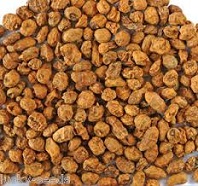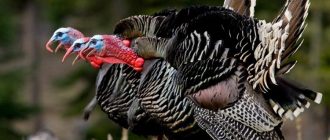Want to plan turkey food plots? Learn the basics of planning a food plot for turkeys…
The wild turkey and its subspecies have been a very important part of American agriculture since the times when Native Indians populated the country. But as their habitat was destroyed and pesticides were used to kill the insects that they forage for, turkey populations have fallen drastically.
As conservationists and hunters began working towards preserving these beautiful birds, however, the use of turkey food plots became more common. Turkeys forage for different items and have quite an extensive menu that they will feed on. From insects like grasshoppers and crickets to perennials and annuals, the turkeys can feed on many things.
This means you can plant a variety of annual and perennial crops like legumes and grasses along with weeds which attract different insects. From seeds to the Bahia grass there are quite a few options for the perennials. When it comes to annuals you can include chufa crop along with other legumes like peas, alfalfa as well as sesame and sesbania. You can also cultivate wheat and millet among other plants on turkey food plots.
Planning the Plantation of Turkey Food Crops
You should plant turkey food plots during spring and summer after the danger of frost has diminished. It is best to plant them in dense and wooded areas, although these will require at least 50% of sunshine. You can also plant turkey food plots along the edges of the field and these plots should be placed at a distance of 300 yards from each other.
You should prepare the seedbed and broadcast it. Also ensure that it is covered at least at a depth of 1 to 1 1/2 inches at a maximum. A good idea is to harrow the plot of land and then broadcast. Follow this by covering the seed by lightly dredging a post to cover the seeds.
How Turkey Food Plots Help with Population
The main seeds utilized for turkey food plots in nowadays are turkey mixtures as well as Chufas. The reason for this is that wild turkeys forage very far afield and they need up to 1 pound of seeds and insects while they do so.
Since turkey populations are being sustained this way there is extensive pressure on resources and always a shortage of food plots for turkey. That is why it’s a good idea to provide them a well-planned diet within the food plot. Of course this ultimately affects the coloring of the Turkey as well as the plumage of the turkey, which is directly impacted by the food that they consume. Furthermore, the healthier the meat the more succulent the meal will be when it comes to cooking turkey for human consumption.
Problems Faced by Turkey Habitats
Another major issue that affects the plots and availability of food for turkeys is the use of herbicides and pesticides. These are used in large quantities to protect common food crops for humans from weeds and insects.
Of course this gets rid of insects and protects the crops but it will eventually reduce the resource for the diet of turkeys. Therefore Turkey food plots have become even more important in this scenario.





